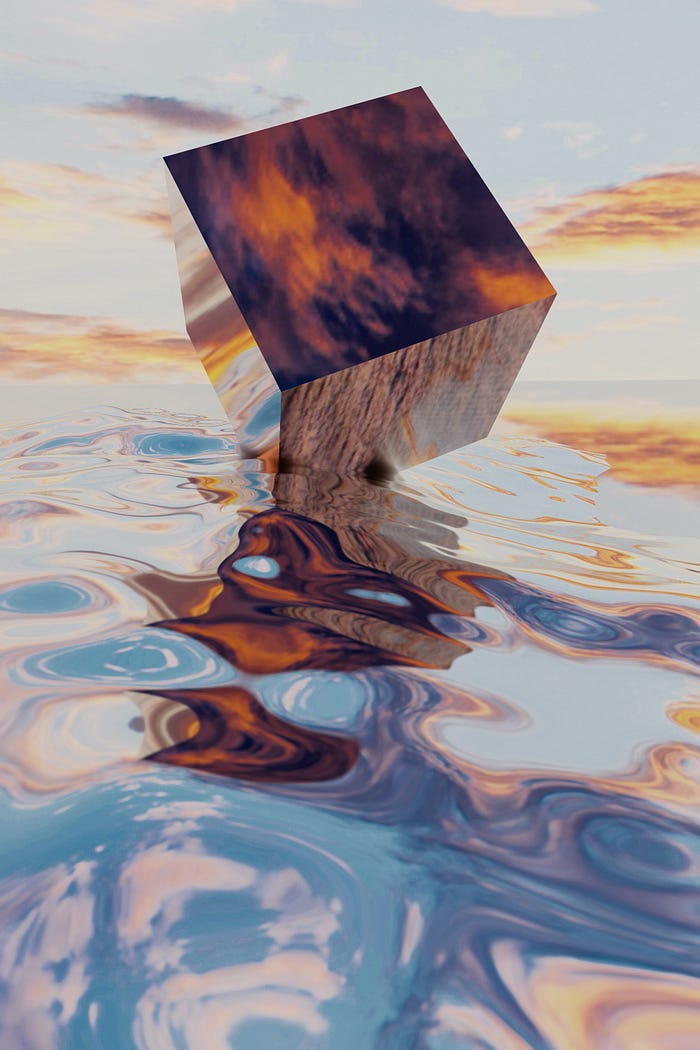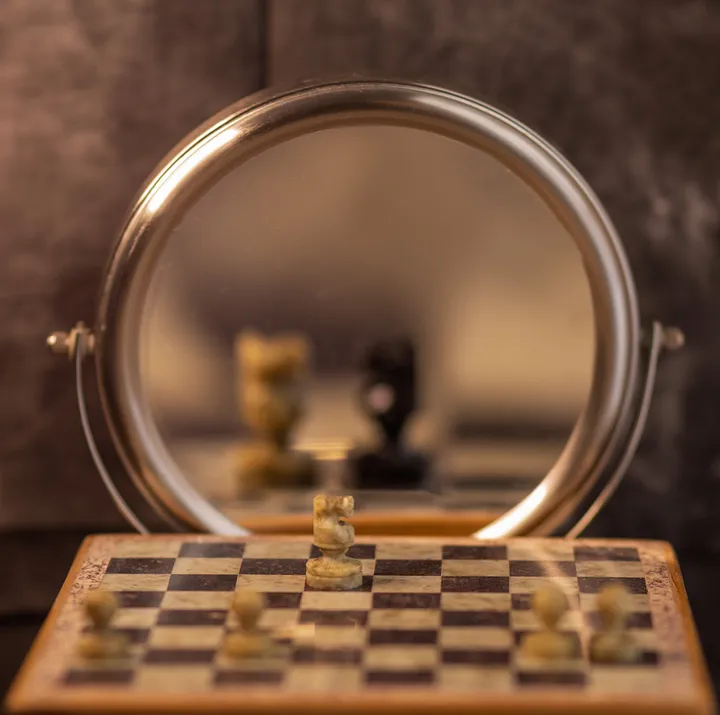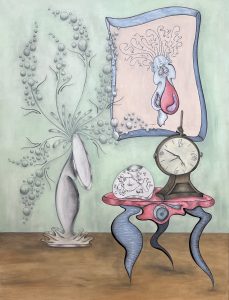Part 1 of 5: This article is the first in a series prepared for The 13th Annual International Conference on the Image, “Here Comes the Metaverse: Designing the Virtual and the Real.” My presentation is entitled: Seeing is Believing: The Ethical and Legal Ramifications of Digital Image Manipulation.
Mister Fake promoted his work across social media as photography. The images earned him thousands of likes and countless sales. His sharp astrophotography amazed me. Even I, a professional photographer, was impressed.
And duped.
This guy positions himself as an expert photographer. He sells prints and calendars. He supports himself with his art. I respect anyone who can achieve that — and I expect you also respect such an achievement. I often search out peers whom I can support and get to know to build my network and my tribe. Through social media connections, I discovered Mister Fake.
And, like my connections, I believed Mister Fake and his lies.
MY AWAKENING
The day I saw his posts was over five years ago, when I had just turned pro-photographer, selling my services and merchandise. I knew I had much to learn. Interested in adding astrophotography to my skill set, I thought to reach out to Mister Fake to network. In my prior profession, I found my network of experts an asset: referrals to and from are key to building one’s business. So, I did a little digging. I found Mister Fake’s private email address on his social media page and drafted a brief email introduction. I complimented his work, asked if I could do anything for him, and asked if he offered training–or if he would let me shadow him on a few shoots.
His response (which he sent in similar incarnations three times over the course of a week, as if he couldn’t remember that he had answered me…) boiled down to: (a) his equipment is “too heavy” for a girl to carry (yes, he stated this); and (b) I should shoot in auto (letting the camera choose all the settings). He also stated that he needed nothing from me and liked to go on his shoots alone. Close email with thanks, bye.
Okay….
Let’s ignore his sexist nonsense and the fact I carry 20 to 60 pounds of my gear even on simple portrait shoots. While his comment informs me he’s a bit of an arrogant, misogynistic creep, it does not inform me as to his skill or talent.
But: Shoot in auto? No pro-photographer shoots in auto. Why would a pro turn over his or her control to a machine? The ability to shoot in manual is, in fact, what separates a pro or a budding-pro from selfie-stick and vacationers taking snapshots with cell phones. Aperture or shutter priority might be the go-to settings in particular contexts. Any pro-photographer would know that.
He also made other recommendations that no photographer would make — like not using a tripod. That comment alone caused a guffaw to burst from my lips. Was he serious? Many, many years ago, the first time I photographed the moon, I shot without a tripod. It’s funny how tiny movements on earth create thousand-miles of blur when you are photographing a heavenly body 240,000 miles away! It’s basic geometry. You know, Pythagoras. But I digress.
I read and reread his response. Logically, he could be: (1) short on time and just being nice to the neophyte who wouldn’t know any better (insulting and dismissive, but harmless); (2) totally disinterested and not only a misogynist but a nasty jerk (demonstrating poor character and not someone with whom I would want to associate anyway); (3) trying to trip me up to lessen competition (pointless, since there is room for every creator — we are not competitors but comrades. Again, not someone with whom I would want to associate); or (4) a big liar and had never taken a photo in his life.
SUPERSLEUTH
I could discount the first three reasons. I just would end my contact with him then and there. But the fourth reason? Could it be true? That this popular and successful “photographer” was not what or who he claimed to be? That he was selling digital art as photographs — touting his skill and acumen — and lying to consumers?
So, I examined his work. Really examined with a critical, expert eye his lovely, well-liked, and commercially successful “photos.” It was then that I researched image manipulation and became image competent. I had much to learn and discovered techniques I had never considered. Not that I had even thought I would need to learn the techniques. Manipulated photos are obvious, right?
Wrong. Wrong.
Guess what? Nothing he offers is actually a photo. Each shot is a piece of digital art. How do I know, you ask? You are jealous, you say. That’s not nice to make that accusation, you say. Well, let’s see:
One shot with hundreds of appreciative likes was of a beach of which I am intimately familiar. I’ve been visiting that beach for over 30 years. His photo depicted that beach with kids in a lifeguard stand overlooking a firework display.
And as I examined the scene, I gasped.
That beach does not have that shoreline. Or fireworks anywhere near it, ever. Or lifeguard stands. Nor does it permit people on that beach at night. The image he posted — which he has for sale — is impossible.
So, I continued to investigate and discovered my instincts were spot on. I found the exact kids in the lifeguard stand as a stock photo. I also found the beach image and the fireworks image as additional stock photos.
Mister Fake, this con artist salesperson, is a big liar who is not a photographer–and does not even use his own photos to create his digital art. Nor does he credit the photographers who produced the stock art, go figure.
His picture of the rising full moon over a popular lighthouse? Impossible. The moon is never at that angle or in that direction. His picture of the galaxy over a nearby beach? Also impossible–the galaxy never appears at that ascension. His hawk gliding over a line of trees? A composite of other photographers’ stock images.

GUILTY OF FRAUD
I respect and admire talented digital artists — like Steve Johnson (his work appears above). Digital art, done well, is impressive as it takes skill, experience, creativity, and talent. No doubt. But: Do not, do not, do not represent that what you are offering are photos. Because they are not. They are digital art. And that’s not the same thing.
Even more contemptible, Mister Fake does not even disclose that the images he uses are not his. It’s criminal. I guess he figures those buying his work are ignorant of his trickery. But I… I am not some dulled sheeple. If he were honest, his work would not be any less admired–but at least he would not be a fraud.
His fakery, his act, led me to pursue the meaning of photography and the use and effects of digital image manipulation. At first, I inquired what other photographers thought of digital manipulation. After having an uncomfortable experience as a contestant in an online competition, I knew I had to do more than just take the industry temperature.
WHAT IS PURE-PHOTOGRAPHY?
In that photography contest, the organizers unknowingly pitted digital art against pure-photography. The winning image, which I admit was beautifully rendered and had an emotional impact, was not clearly digital art. So, I did some research and found both the subject and the background scene for sale as separate images on a popular stock photo site. The contestant who represented herself as a photographer had merged the two images flawlessly. And entered her digital composition into a photography contest.
I admit, I became indignant.
And I wasn’t the only photographer to notice her misrepresentation. I watched competitors attack each other — and the judges — for choosing digital art. The organizers advertised the competition as a photography contest. Digital artists asserted their works were photographs because they combined and layered photographs or manipulated photographs. Pure-photographers who had entered photos raged against those assertions. The digital artists struck back with: Don’t you develop your raw images? Don’t you change contrast, white balance, and exposure? Don’t you perform beauty edits and remove distracting items?
That’s when I realized we need to draw a line in the sand, so to speak. As a retired attorney who is intimately familiar with intellectual property and commercial law, and the rules of evidence, I became obsessed with this issue. The definition of what is a photo was a primary point of disagreement. When does a pure photo become digital art? When is it acceptable to manipulate an image? Is it fraudulent to represent an image as a photo if the photographer manipulates it in any manner? Is it no longer a photo if we merge two photos?
If we cannot agree on what is and is not a photo, what is fact and what is fiction, we are doomed. Without clear definitions, we cannot determine what is true and what is not. What if we could not agree on what was edible and what was inedible? Restaurants could sell feces and blood salad with pesticide dressing! Definitions matter. So, that’s where I needed to begin my investigation. And that’s where I am taking you as we begin this journey through the world of image manipulation.
IMAGE ETHICS SERIES
I do not argue that image manipulation should be illegal — some breathtaking art results from talented digital creatives! I, myself, have dabbled to create abstract and fantastical art. I do, however, raise issue with image manipulation that is fraudulent, harmful, and dangerous. Therefore, in this series of articles, I will first attempt to define image manipulation and draw a line for what is innocent and what is harmful.
Next, I will argue how — and why — image manipulation is harmful to society. Extensive research has provided me with historic, psychological, emotional, social, and consumer lenses. My effort is not a mere complaint for Mister Fake’s counterfeit photo products. I am adding to that slight harm the crimes of manipulative persuasive tactics, fraudulent political efforts and propaganda, reality warping representation of places and people, deceptive evidence altering criminal and civil legal findings, and the destruction of journalism, the once-relied upon fourth estate. And the ever-evolving technology that is weaponizing what observers interpret as reality.
Third, I will introduce and compare solutions to abate the societal harms. Governments, organizations, and individuals attempt to assuage the potential and perpetual damage done through manipulated images. And while I have my opinion of what the solution or solutions should be, I am only one expert on this planet. Do we redefine (or define) photograph? Image? Digital art? Do we pass laws? Do we adopt ethics codes?
Ultimately, I invite you, my peers, to engage in this discussion. That is my point and my purpose. These articles will appear here, in Manual Focus, and then supplement my presentation at the Thirteenth International Conference on The Image on September 28th and 29th at The University of Texas at Austin. I invite you to attend and to engage, actively, in the discussion there and here, on Medium. Together, we can identify and implement solutions that will negate the harms while allowing creators like ourselves the freedom to use all the tools at our disposal.
So, what do we do about Mister Photo Manipulation?
References are embedded within the article, and you can peruse the complete list of resources here.



